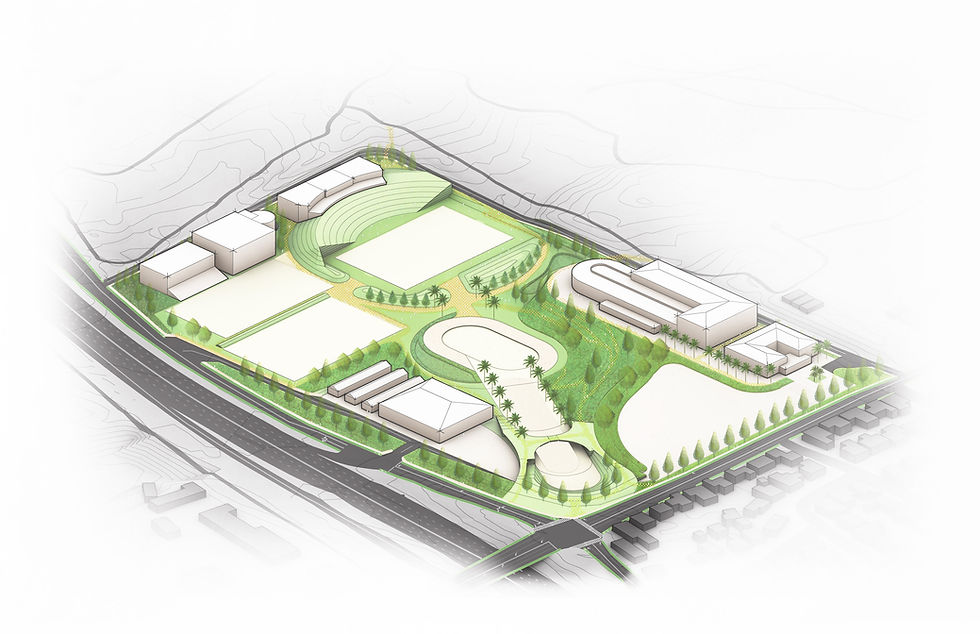Comfortable Places for Learning: A Hawaii Story
- Christine Koroki

- Jan 30, 2021
- 2 min read
It is the end of lunch recess and students are finding their way back into classrooms at James B. Campbell High School in Ewa Beach, Hawai‘i. They pass through a lush courtyard covered by a large breathable shading structure that cools the air before it enters the classrooms. The recent addition of the shade structure has transformed the courtyard, sparking a new garden project that features native plants. Lessons can be seen taking place there at times. In the classrooms the ceiling fans are on, the lights are off and a soft natural glow enters through the tinted windows.

Their safe, cool and comfortable environment was the result of an MKThink led data-driven study and analysis to improve heat conditions at Campbell High School in the most effective manner. Campbell High School is located in a hot and dry climate and has a student population of over 3,100 students. It faced challenges of overheating, poor indoor light, and noise pollution from the airport and busy streets nearby.
MKThink’s studies and implementations of thermal comfort and passive cooling strategies at Campbell High School also included replacing old opaque jalousie windows to allow natural light to enter while keeping the noise pollution out. The roofs of buildings have been painted a lighter color - a simple yet effective way to keep heat from entering the building. Photovoltaic air conditioning was installed to supplement rather than dominate, to work in conjunction with the passive cooling solutions such as outdoor shading and ceiling fans.
But probably the most popular and highly recommended solution to enhancing overall campus experience has been the shading structure that covers the courtyard of building O. The fabric shapes that make up the shade replicate the sails on traditional Polynesian voyaging canoes and are projected throughout the courtyard, impacting both the indoor and the outdoor learning environment.
After the improvements, students choose to return to the classrooms outside of instruction hours for a break from the hot and noisy climate outside. Interim Vice-Principal Noel Hokada, a former biology instructor at Campbell High School says,
“It’s worth it because students come to a nicer environment. It impacts the way they think, the way they feel, and ability to be well physically and emotionally. I can be a better teacher because I can think clearer and my students always tell me it just feels better, they just feel calm and relaxed. They will come in and eat lunch here and they will really be at ease. The students much prefer natural light over fluorescent lighting, especially because I teach about it. I usually just turn on the LED lights on the fans and use daylight in the classroom.”




Comments